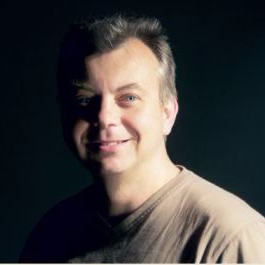Solid Dielectrics and Their Applications
A special issue of Energies (ISSN 1996-1073). This special issue belongs to the section "F: Electrical Engineering".
Deadline for manuscript submissions: closed (31 December 2021) | Viewed by 6371
Special Issue Editors
Interests: gyroscopes, microsensors, flow sensors, gas sensors, laminar flow, piezoelectric transducers, ultrasonic transducers, Coriolis force, acoustic impedance, aerodynamics, biomedical ultrasonics, bismuth compounds, calorimetry, composite materials, electric impedance, electromechanical effects, etching, flow measurement, high-temperature techniques, jets, particle reinforced composites, photolithography, piezoelectric materials, piezoelectricity, probes
Special Issue Information
Dear Colleagues,
The Guest Editors are inviting submissions to a Special Issue of Energies on the subject area of “Solid Dielectrics and their Applications”.
Dielectric materials have been from the very beginning at the heart of the electrical and electronics components and systems, and a main topic related to their design and reliability. Nowadays, the continuously increasing demand of improving energy efficiency requires more and more integration and miniaturization, involving significant increase of thermal, electrical and mechanical stress applied to dielectrics during service, while these materials are one of the main reasons for failures in these systems. In this context, this Special Issue will deal with the different aspects related to solid dielectrics and to their present and future applications.
Topics of interest for publication include (but are not limited to):
- Basic and advanced properties of solid dielectrics
- Different types of dielectric materials (polymers, ceramics, composites) and their applications
- Tailoring of dielectric properties for specific applications
- Dielectrics in micro and nano-electronics
- Dielectrics in high voltage applications (dc and ac)
- Dielectrics in power electronics
- Dielectrics in space applications
- Dielectrics in sensors and actuators
- Dielectrics for energy storage systems
- Electrets and their applications
- Nano-dielectrics and their applications
- Piezoelectric materials and their applications
- Bio-dielectrics
- High-temperature solid dielectrics and their applications
- High field solid dielectrics and their applications
- Behavior of dielectric properties under high stress and reliability-related problems in electronic and electrical engineering components and systems
- Lifetime estimation of dielectric materials and structures
- Insulating systems
- Set-up and optimization of insulating structures and systems
- Renewable and bio-sourced dielectrics
- Challenges and prospects related to the use of solid dielectrics in emerging applications
Prof. Dr. Philippe Combette
Prof. Petru Notingher
Guest Editors
Manuscript Submission Information
Manuscripts should be submitted online at www.mdpi.com by registering and logging in to this website. Once you are registered, click here to go to the submission form. Manuscripts can be submitted until the deadline. All submissions that pass pre-check are peer-reviewed. Accepted papers will be published continuously in the journal (as soon as accepted) and will be listed together on the special issue website. Research articles, review articles as well as short communications are invited. For planned papers, a title and short abstract (about 100 words) can be sent to the Editorial Office for announcement on this website.
Submitted manuscripts should not have been published previously, nor be under consideration for publication elsewhere (except conference proceedings papers). All manuscripts are thoroughly refereed through a single-blind peer-review process. A guide for authors and other relevant information for submission of manuscripts is available on the Instructions for Authors page. Energies is an international peer-reviewed open access semimonthly journal published by MDPI.
Please visit the Instructions for Authors page before submitting a manuscript. The Article Processing Charge (APC) for publication in this open access journal is 2600 CHF (Swiss Francs). Submitted papers should be well formatted and use good English. Authors may use MDPI's English editing service prior to publication or during author revisions.
Keywords
- dielectric
- insulator
- electrical properties
- permittivity
- conductivity
- breakdown field
- power transmission
- power electronics
- electric charge
- hvdc
- hvac
- electric field
- high voltage
- high temperature
- reliability
- cable
- electrical machines
- sensors
- actuators
- electronics
- energy storage
Benefits of Publishing in a Special Issue
- Ease of navigation: Grouping papers by topic helps scholars navigate broad scope journals more efficiently.
- Greater discoverability: Special Issues support the reach and impact of scientific research. Articles in Special Issues are more discoverable and cited more frequently.
- Expansion of research network: Special Issues facilitate connections among authors, fostering scientific collaborations.
- External promotion: Articles in Special Issues are often promoted through the journal's social media, increasing their visibility.
- e-Book format: Special Issues with more than 10 articles can be published as dedicated e-books, ensuring wide and rapid dissemination.
Further information on MDPI's Special Issue polices can be found here.






